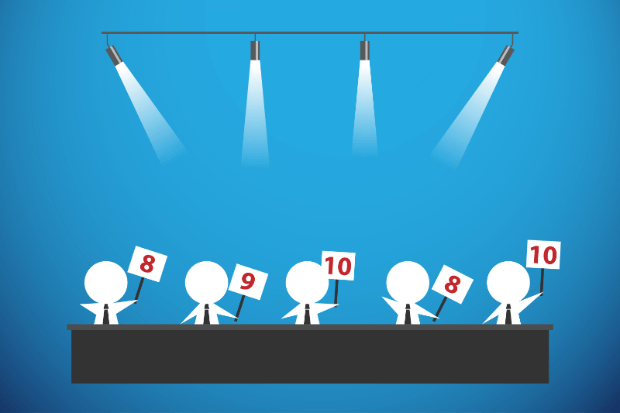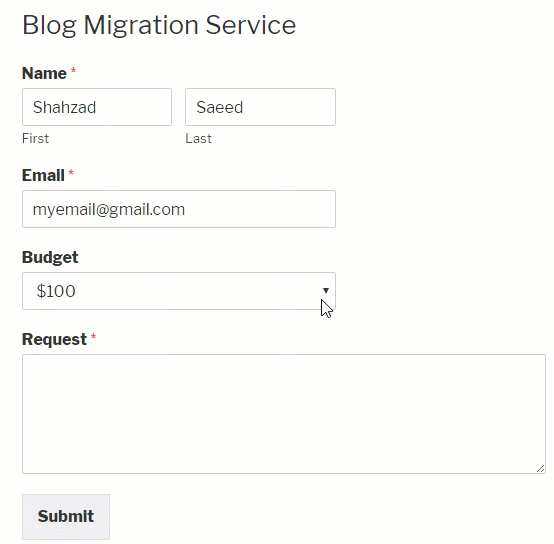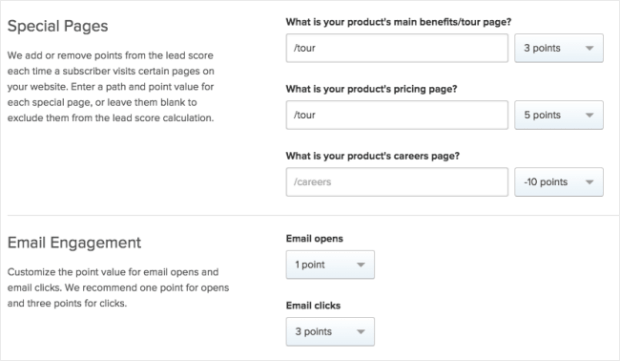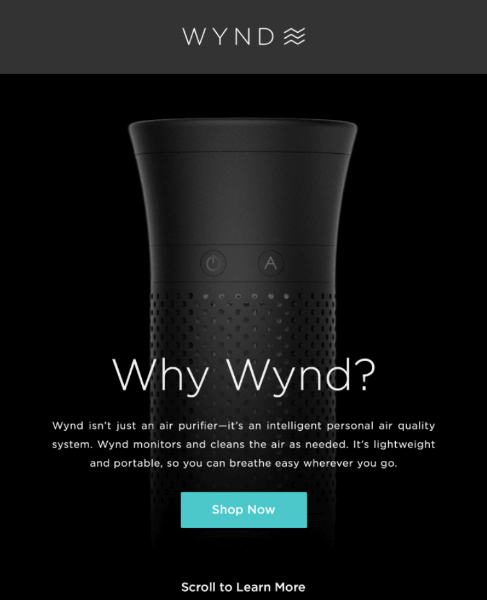In this article, we’ll teach you how to create a lead scoring system and share lead scoring best practices so that you can easily determine who’s ready to buy.
Generating a ton of leads is key to growing your business and boosting your revenue. But, not all of your leads are ready to buy. You need to be able to figure out which of your leads are still in the window shopping stage and which are ready to bust out their credit cards.
How can you figure that out?
With lead scoring, you can remove the guesswork and know exactly who’s ready to buy and what you can do to convert them.
What is Lead Scoring?
Lead scoring is a way of ranking prospects to determine their sales-readiness. Each lead is assigned a point value. These points are based on particular attributes and behaviors that show that the lead is ready to become a customer in the near future. The higher the lead score, the more likely they’ll buy.
For instance, a lead that subscribed to your email list then followed you on social media AND visited the pricing page on your website would have a higher lead score than a lead who hasn’t done any of those things.
This process can help sales and marketing teams identify which leads they should be focusing on. By focusing on the leads that are most ready to buy, businesses can easily increase conversions by turning leads into opportunities.
A lead is simply the contact information of a person or business that could lead to a future sale. But an opportunity is a qualified sales lead, which means the person or the business has met certain criteria that shows they’re likely to become a customer.
Then, you can focus on turning opportunities into deals, which are actual sales for your business.
Speaking of increasing conversions, let’s take a closer look at the benefits of lead scoring.
The Benefits of Lead Scoring
Lead scoring can be very valuable to businesses. But, how many companies use it?
Unfortunately, not many. In fact, 79% of B2B marketers have not established a lead scoring strategy.
It’s clear that many companies aren’t aware of the benefits this strategy can bring, so let’s go over some of them:
Boosts Conversions
One of the biggest benefits of lead scoring is an increase in conversions. In fact, a study found that 38% of businesses surveyed experienced higher lead to opportunity conversion rates because of it.
With lead scoring, your team can easily identify which of your leads is closest to sales-readiness and prioritize them. And more conversions equal more revenue.
More Effective Marketing Campaigns
Lead scoring helps you identify where your highest qualified leads are coming from so that you can create more effective marketing campaigns.
For instance, if the majority of your quality leads are finding you through your blog, you can focus on producing more content to bring in even more highly-qualified leads.
Plus, by figuring out where your leads are in the customer journey, you can send them more targeted messages and content to improve lead nurturing. When the content you send is relevant to the lead, they’re more likely to take action.
Aligns Marketing and Sales
With lead scoring, your marketing and sales teams will be on the same page. Both teams will be able to see which lead generation strategies produce the best quality leads. In addition, each lead that marketing passes on to sales will be qualified and ready to close.
Shorten Sales Cycle
Instead of waiting around or wasting time on leads that aren’t ready to buy, you can use lead scoring to speed up the sales cycle. This helps you save time because you’re able to zero in on leads that are ready now.
Now that we’ve covered the benefits of lead scoring, let’s dive into our guide to lead scoring. Here, you’ll learn how to put it to work for you, step by step.
How to Calculate a Basic Lead Score
Calculating a lead score might seem difficult, especially if math isn’t your strongest subject. But, it’s actually pretty simple. We’ll guide you through these 5 easy steps to calculate a basic lead score and you won’t even have to bust out a calculator.
1. Create Buyer Personas
Before you begin calculating your lead score, you have to decide what type of customer is an ideal fit for your product or service.
For example, if you have a product that helps teachers, a lead that’s currently in a teaching position is the perfect fit. On the other hand, if a lead is still in school with the hopes of becoming a teacher in the future, they’re probably not ready to become your customer.
So, you need to determine the exact criteria of a customer that is ready to buy from you now. You can do this by creating buyer personas.
A buyer persona (or customer avatar) is a fictional person that represents the company’s ideal customer. You can use a template like the one below to fill in every detail about your ideal customers such as their occupation, job title, annual income, goals, values, pain points, and more.
You can come up with the details for your buyer personas by looking at the existing data of your current customers, sending a survey to your existing customers, and by doing online research.
Knowing who your ideal customer is inside and out will make scoring more precise.
2. Choose Behaviors to Score
Once you know what your ideal customer looks like, you can start to decide which attributes and behaviors to score.
The attributes of your leads include demographic and psychographic information like:
- Age
- Location
- Interests
- Beliefs
- Job Title
- Occupation/Industry
- Annual Income
- Size of Company
When deciding what lead attributes to score, always keep your ideal customer in mind.
For example, with B2B lead scoring, you’ll want to focus on attributes like industry, company size, and job title. But with B2C lead scoring, you may want to add more weight to attributes such as age, location, gender, and interests.
Lead behaviors to score can include actions like:
- Email Signups
- Email Opens/Clicks
- Lead Magnet Downloads
- Web Page Visits
- Form Submissions
- Free Trial Signups
- Social Media Engagement
- Webinar Registrations
- Live chat interactions
For behavioral criteria, it’s up to your business to decide which behaviors indicate sales-readiness. Consider getting together with your team to figure out which actions your average customer takes before converting.
3. Assign Points to Each Behavior
After you’ve chosen the behaviors to score, it’s time to decide how many points each of those behaviors should be worth.
Remember, you’re scoring leads based on how likely they are to convert so the points you assign to each behavior should reflect that.
Here’s a lead scoring example:
User A signs up for your email list because they enjoy your content. But that doesn’t mean they’re ready to buy.
User B, on the other hand, registers for a free trial.
Which user is closer to a conversion?
It’s safe to say that User B is showing more interest in your product/service. So, you could determine that an email list signup is worth 3 points and free trial signup is worth 20 points.
How do you know which behaviors matter most?
Instead of just guessing which behaviors lead to a user becoming a customer, try some of these strategies:
Talk to Your Sales Team
Your sales team should have a pretty good idea of what behaviors consumers commonly take before converting. So, ask them for their insight.
If your sales team finds that it’s easier to close a sale after a user has registered and participated in a webinar, this shows that webinar registrations should be worth more points in your scoring system.
Talk to Your Customers
What better way to find out what makes people become customers than asking your customers themselves!
Consider surveying or interviewing customers about what specifically made them decide to buy. If you notice a trend in the answers you receive, you can use that information to more effectively assign points to particular actions.
Look at Analytics
By looking at your website analytics, you can find out the exact actions users take on your website before becoming customers.
For an easy way to do this, enable user activity tracking. This lets you accurately track unique visits and interactions so you can see the individual buyer journey. In other words, you can discover what a user does on your website before they make a purchase.
Once you decide the point values for the behaviors that lead to a conversion, you can move on to the next step.
But, don’t forget about the negative points.
Not all of your top leads will stay hot. For instance, someone could subscribe to your email list and download your lead magnets one day and stop visiting your site and opening up your emails the next. So, decide which behaviors will result in negative points for your lead scoring system as well.
4. Choose the Point Level That Makes a Lead Qualified
When you add up all of the points you give each lead, how will you know which ones are ready to buy? Of course, the more points they have, the more ready they are to convert. But, you need to make it clear by choosing the point level that makes a lead qualified.
For instance, is a lead with 50 points qualified? What about at lead with 40 points? Determining the point level at which a lead is sales-ready will let your team know which leads to focus on.
Be prepared to do some testing to find the right point level for your target audience. It may take time to get it right, but it will pay off in the long run.
One way to figure out what your point level should be is by first performing lead scoring with no minimum point level. Follow up with all of your leads and as you’re scoring leads, you’ll begin to see at which point level leads are no longer converting into customers.
5. Get Calculating
That’s it! You’ve got a lead scoring system in place.
All that’s left to do is some basic math. Add up the points for each individual lead and follow up with the leads that meet the minimum score for sales-readiness.
But, if you want to take your lead scoring to the next level, keep reading.
Lead Scoring Best Practices: Tips to Improve
So, you’ve mastered the basics of lead scoring. Congratulations!
If you want to improve your lead scoring to get more accurate information about your leads, make lead scoring even easier, and generate more revenue, check out these next-level lead scoring best practices.
Capture Data with Online Forms
When a website visitor becomes a lead, you’ll want to know as much as you can about them. The more information you have, the more effective your lead scoring will be. So, to capture the info you need about your new leads, create an online form on your website.
You can use online forms in a number of different ways on your website, including:
- Simple Contact Forms
- Request a Quote Forms
- Event Registration Forms
- Email Newsletter Signup Forms
- Account Signup Forms
- Contest or Giveaway Entry Forms
Be sure to add form fields that get the user to provide you the important data you need for lead scoring.
For instance, you can ask for their location, job title, industry, and more. In the example below, users are even required to provide their budget range.
By asking the right questions in your online forms, you can start the lead scoring process immediately.
Automate Your Lead Scoring
Now, all of this lead scoring business might seem a bit time consuming, especially if you’re a huge company with a ton of leads. Luckily, you can automate your lead scoring. With the best lead scoring software, lead scoring is a breeze.
For example, with Drip you can enable lead scoring to get lead scores assigned to your subscribers based on their interactions with your website and emails.
Some other great lead scoring tools include HubSpot Lead Scoring, Salesforce Engage, and Velocify.
Some lead scoring software also offers predictive lead scoring. Predictive lead scoring is different from traditional lead scoring because it uses an algorithm to predict which leads in your database are most likely to convert. Plus, with predictive lead scoring, you don’t have to figure out which behaviors to score and how many points they’re worth — the software does it all for you.
Create a Follow-Up Plan
After you’ve calculated your lead scores and know which of your leads are hot, it’s time to take action. Create a follow-up plan to turn those leads into customers.
One way to do that is with email marketing. Using your lead scoring tools and your email marketing service, as soon as a lead crosses the threshold point level for sales-readiness, you can automatically send them an email drip campaign to encourage them to buy.
An email drip campaign is simply a series of automated emails sent out on a predetermined schedule to certain email subscribers to achieve specific results.
With an email drip campaign, you can send relevant content that guides the user through the customer journey. This can be anything from tutorials, product education, case studies, or anything that would be useful to your leads.
Take a look at this example from Wynd. It shows subscribers how the product works and what’s different about it, which can encourage leads to become customers.
Without a follow-up plan, your leads will forever be leads. But, a solid follow-up plan will convince your leads to become customers.
That’s it! Now that you know all of the lead scoring best practices, you can become a master at calculating lead scores. Say goodbye to time wasted trying to convert cold leads. Instead, you can focus on your hottest leads and heat up your revenue!
















Add a Comment